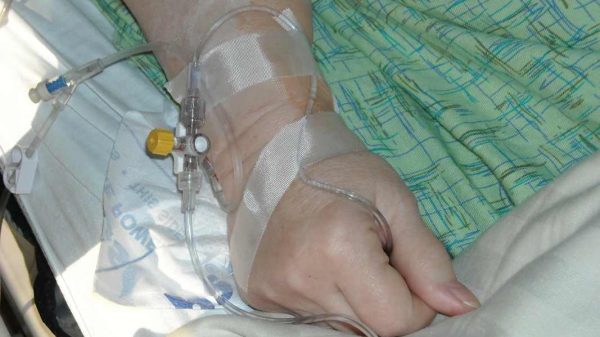When it comes to any condition diagnosis and management happens to be the most important. Why is that? A wrong diagnosis would mean wrong management. And this means that your patient wouldn’t get any better. So it’s important for doctors to make the proper diagnosis. Once the issue of the diagnosis is settled then a good management plan can be opted for. Well, for now, we will just be looking at ascites diagnosis and management. How does a doctor confirm that you really have ascites? And what are the possible management options that are available for you to opt for?
For some conditions, diagnosis can be very difficult. And the reason behind this is because they present with signs and symptoms that aren’t so distinct. Meaning these signs and symptoms can also be seen in many other conditions. But for some conditions diagnosing is quite easy. And that’s because they have that distinct sign and symptom that makes it glaring that we are talking about that condition. So which category do ascites fall under? You might want to take a guess now before we take a look at the answer later.
What is Ascites?
So there are chances that you’ve heard one or two things about ascites before. We will be having a better look at what ascites is all about here.
Ascites is actually a condition that affects the abdomen. It is the increased fluid level in the peritoneal cavity. And this of course is abnormal. There are actually many diseases that can cause the accumulation of fluid in the abdomen. And the reason why it occurs differs from cause to cause.
One known cause of ascites is cancer. When cancer spreads into the abdomen it causes the leakage of fluid. For other causes, it could be as a result of water and sodium retention. All these would lead to the accumulation of fluid.
The most common cause of ascites is actually a liver disease. In this condition, the liver is unable to produce enough protein that would help retain fluid in the bloodstream. It could also be as a result of obstruction of the flow due to scarring of the liver.
The normal process is that water is held in the bloodstream with the help of oncotic pressure. When the proteins are pulled upon there won’t be any leakage into the surrounding tissues. And when there is tissue damage there won’t be proper production of these proteins anymore. With this, the oncotic pressure reduces and then water leaks.
It’s important that you go see your doctor when you have abnormal abdominal swelling. It could be ascites. And if you already have ascites the presence of pain and fever could indicate there’s an infection already. Go see a doctor as soon as you can.
Ascites Diagnosis
Diagnosing any condition comes with a proper physical examination and a detailed medical history. This would help the doctor understand the state of the condition as well as the possible cause. For ascites these processes as carried out as well. In ascites, physical examination and medical history are very important. And that’s because this condition comes with signs and symptoms that are not specific.
When the fluid in the abdomen is more than 500ml this can be noticed during physical examination. And that’s with the presence of bulging flanks. Also, fluid waves performed would help indicate. If the amount of fluid is small then ultrasound would be able to detect that. There are times that when ultrasound or a CT scan is done for other conditions ascites is discovered.
When it comes to ascites, diagnosing the exact cause of the condition is very important. The medical history might provide clues that would help you in determining the cause. You might want to include asking questions such as previous liver disease and viral hepatitis. Also, medication history is very important.
Also, a complete metabolic panel can be done to help detect the patterns of a liver problem. As well as the functional status of both the kidney and the liver. And the electrolyte levels as well. Also, a complete blood count can help with determining the exact cause of ascites.
Another test that can be done is the coagulation panel abnormalities. This can be abnormal if there is a problem with the liver. As well as inadequate production of clotting proteins.
If the cause is not determined with all these then you would have to examine the fluid. This would help provide more diagnostic data that is needed. The process used here is paracentesis. For testing, just a small amount of fluid is needed. About a tablespoon of the fluid. After the fluid is gotten it is then sent to the lab for testing.
Ascites Management
There are several ways that you can manage ascites. And they are:
- Reduce salt intake: One of the most important steps to take when you find out you have ascites is to reduce your salt intake. The recommended amount is about 2000mg or less in a day. You might want to consult a dietitian to help you out here.
- Use diuretics: They are also known as water pills. These medications are well-known for treating ascites. Usually, your doctor would prescribe the drugs for you. Make sure you use them as prescribed. Make sure that while using these pills you also reduce sodium intake.
- Paracentesis: Here fluid that is built up in the stomach is drained. And this is used when the amount of fluid in the abdomen is just too much.
- Surgery: This is a more aggressive management method. Here a shunt is used. The shunt is placed between the portal vein and the smaller veins. Then the shunt can be placed directly through the liver. This would help reduce portal hypertension and reduce ascites.
- Liver transplant: Not just anyone uses this management method. Only people with severe cirrhosis would have to get a liver transplant. And this is done because the liver is failing already.
We hope you have learned a lot from the tips used for ascites diagnosis and management.
























